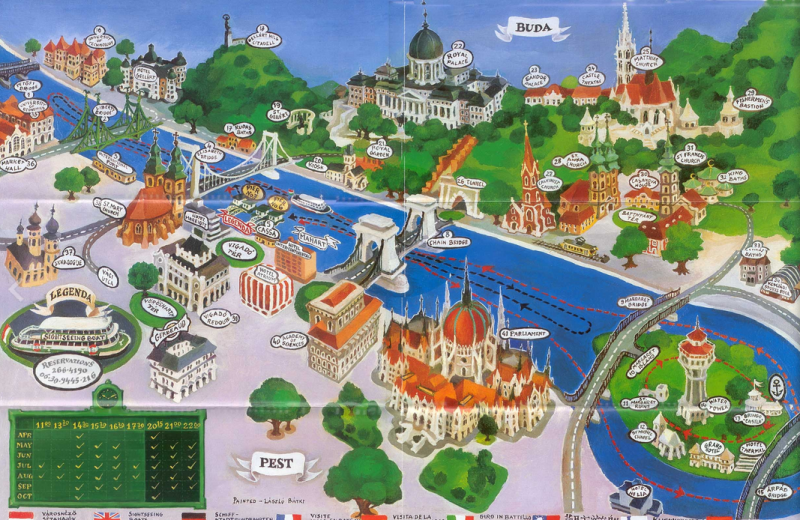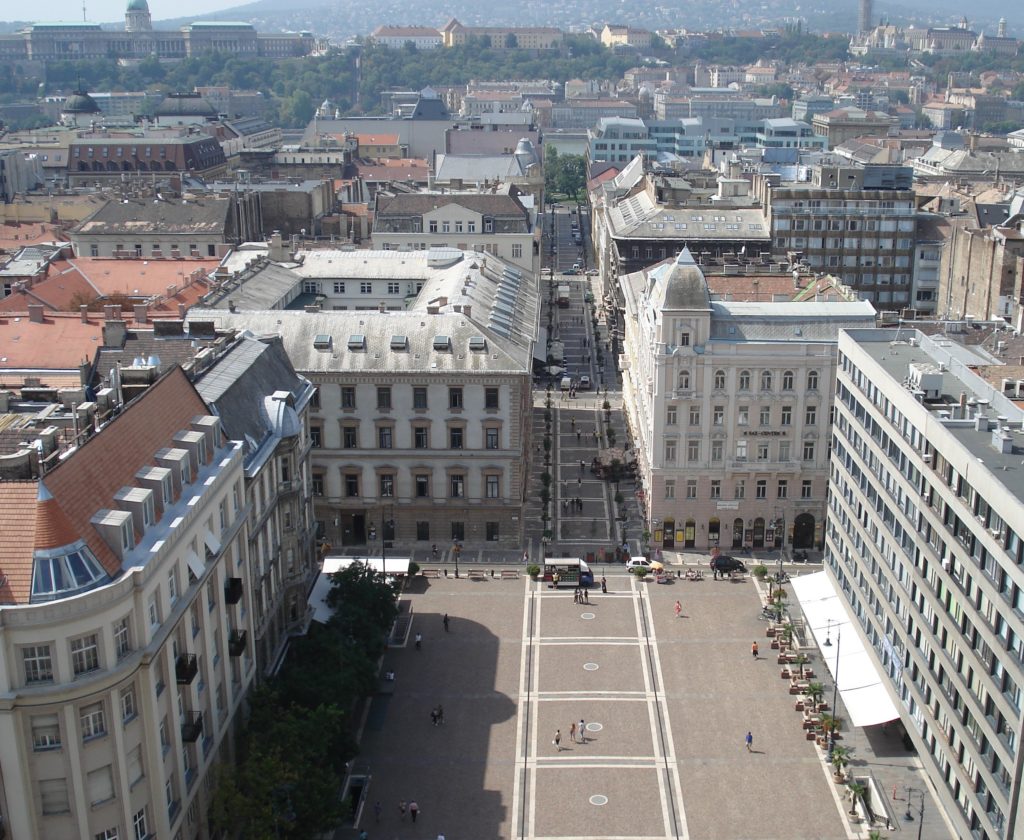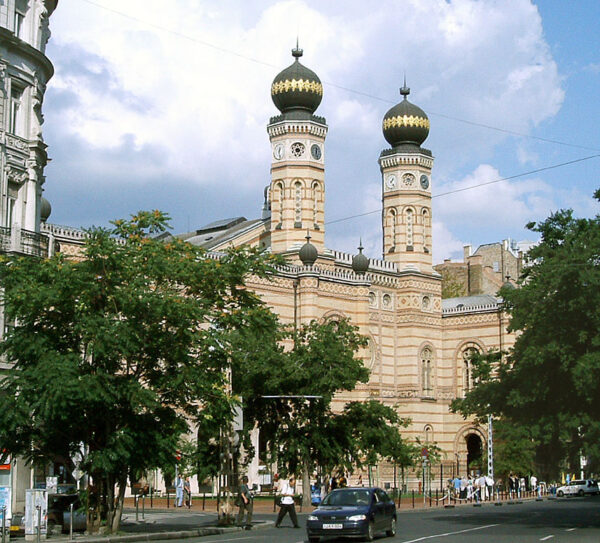If this were a normal recounting, I’d be writing about my time in Budapest in rather rapturous detail because the city in the summer is a visitor’s dream. But, if you were with me at the beginning of this tale, you know this isn’t a normal recounting.
To recap: First, I’ve been home for more than three months and my memories become a bit blurrier with each passing day. Second, I have no photos to use as a memory sharpening lens. Third, Budapest is where I lost my camera so I don’t even have notes regarding the subjects of my photos – something else I frequently use to stimulate my memory. And finally, my recordings of our guided tour – the only external prompt I’ve used to aid in writing this journal – are unexpectedly garbled. I can only ask for your indulgence as I struggle to plate my Budapest experience in an appetizing way that nourishes your curiosity.
On this journey, we spent two full days in Zagreb and, although it’s impossible to experience all a city that size has to offer in two days, neither did our short stay leave me with the sense that my time there was so brief as to feel that the visit was inadequate. I can’t say the same about Budapest where even three full days feels like an insubstantial stay.
Admittedly, part of the difference is simply attributable to the size of the city. Budapest is, by far, the largest city in both area and population on this year’s itinerary. The city itself is more than 525 square kilometers and, with a population exceeding 1,700,000 (more than twice that of Zagreb and four times as large as Ljubljana), it’s the ninth largest city in the European Union.
More than that, however, is the very nature of the city – or cities. Before I left the States, I’d read a slogan that said, “Visit Buda but stay in Pest.” In this, we were fortunate because we did, indeed, stay in Pest and were just steps from the stunning Hungarian State Opera House.

[From Wikipedia By PDXdj at English Wikipedia, CC BY 2.5].
In addition, you’ll find Heroes Square, the Parliament, the Jewish Quarter (which is home to much of the city’s nightlife), and many other sites on the Pest side. Among the highlights on Buda’s side are the Buda Castle, Saint Matthias’ Church, Gellert Hill, and the Fisherman’s Bastion.
Like Protein and Carbohydrate.
Although the cities of Buda and Pest were physically connected by the Chain Bridge in 1843 and have been nominally and administratively joined since 1873, spend even a brief time on either side of the Danube and you will quickly discover that the cities and their residents have distinct but complementary personalities – as the slogan above clearly shows.
The differences start with the topography of the cities. Buda is lush, green and very hilly while Pest is more urban and relatively flat. This map from the Traveled Mind blog,

while providing little else in the way of perspective, does give a sense of that difference. The view toward Buda in the photo below taken from the top of Saint Istvan’s Basilica, mere blocks from our hotel, might also provide a visual clue to the differences (photo from Wikimedia).
 Looking straight ahead just visible beyond the trees that mark the end of Zrinyi Street you can see a ribbon of the river. The enormous, elegant building at the top left in the photo is the Castle which houses the Budapest History Museum, the National Széchényi Library, and the Hungarian National Gallery.
Looking straight ahead just visible beyond the trees that mark the end of Zrinyi Street you can see a ribbon of the river. The enormous, elegant building at the top left in the photo is the Castle which houses the Budapest History Museum, the National Széchényi Library, and the Hungarian National Gallery.
Once we’d arrived at our hotel, Damir handed us off to our local guide and host Barbara, said his farewells, and headed off to return to Zagreb. Barbara took us on a brief orientation to buy some forints and take a ride on the Metro with a brief explanation of Budapest’s public transportation system. We then returned to the hotel, tidied up and, in the tribal pattern of our stay, Pat and I set off to dinner in one direction while Connie, Geanie, and Jackie went another.
An adventure in the Quarter.
I wanted to have dinner at a restaurant called Mazel Tov which can be found, unsurprisingly, in the Jewish Quarter which was an easy walk from the hotel. (In a small world sort of moment, I was pointed to this place by a young man named Logan, who is {was} one of the student managers for Maryland’s volleyball team. I’d been sitting in on a volleyball practice session when I mentioned that I was returning from this trip on the day the Terps opened the season and expected that these would be the only home games I’d miss. Logan told me that his parents had recently been in Budapest and had had a wonderful time and an excellent meal at Mazel Tov and its proximity to our hotel seemed to be something of a serendipitous signal.)
I’m going to pause a moment here to discuss my sense of direction. I consider it both peccable and impeccable. When I’m completely unfamiliar with a place, I easily lose my orientation even if I have a map with me (a personal shortcoming I’ve mentioned in other posts). Hence, peccable. As my familiarity grows, and I often need only to get from point A to point B once to gain that familiarity, the mental map imprints, and I can return there easily.
This night, with paper map in hand, Pat and I set out from the hotel and confidently headed off toward the Quarter. My peccability appeared when we walked several blocks past the street where we had meant to turn and, after turning back, turned left when we should have turned right. Fortunately, it led to another rather serendipitous moment.
Remember, we’re in the Jewish Quarter and one thing you might expect to find in a Jewish Quarter is a synagogue. And the one we found would be hard to miss. The Dohány Street Synagogue is also rightly called the Great Synagogue because it’s the largest synagogue in Europe and second or third largest in the world. Only the Belz Great Synagogue in Jerusalem is definitively larger. Temple Emmanu-El in New York might also exceed the capacity of the Dohány Street Synagogue but different sources report different capacities. Whatever the case, it’s big.

[By OsvátA at Hungarian Wikipedia. – Transferred from hu.wikipedia to Commons., CC BY-SA 3.0.]
From a historical perspective, it’s worth noting that the synagogue is said to have been built in the place where Theodore Herzl, one of the founders of 20th century political Zionism, was born (though I suspect what meant is that it was built near Herzl’s birthplace because he was born in 1859 some five years after construction on the synagogue started). It’s also reported that Dohány Street marked one edge of the Budapest ghetto. Finally, a 5,000-pipe organ was installed in the synagogue in 1859 and both Ferenc (Franz) Liszt and Camille Saint-Saens reportedly played it.
Another interesting note about this synagogue is its Yiddish name Tabak-Shul which is sometimes rendered as Tabakgasse Synagogue. The Croatian word for tobacco is ‘duhan’. In Hungarian, it’s ‘dohány’. In German and Yiddish, that word is ‘tabak’. So, the Great Synagogue in Budapest is the Tobacco Street Synagogue or Tabak-Shul.
Because it was late in the day, Pat and I decided not to pay the comparatively steep admission price to visit the complex. Neither did we return to visit it later, making it the first of a number of Budapest sites we’d leave behind us unseen or at least unvisited.
Note: In keeping with my 2022-2023 reformation of the blog into shorter entries, backdated to maintain their sequence, any comments on this post might pertain to its new configuration. See the full explanation in the post Conventions and Conversions.
While I don’t remember the names of some of the places I dined at while in Budapest, I was struck by the number of times we went into what I thought would be a dive, only to find a lovely interior – I never found out if this was by intention or by accident, but it happened often enough to be noticeable.
cheers,
C
And now, I hope you know that it was quite probably intentional.